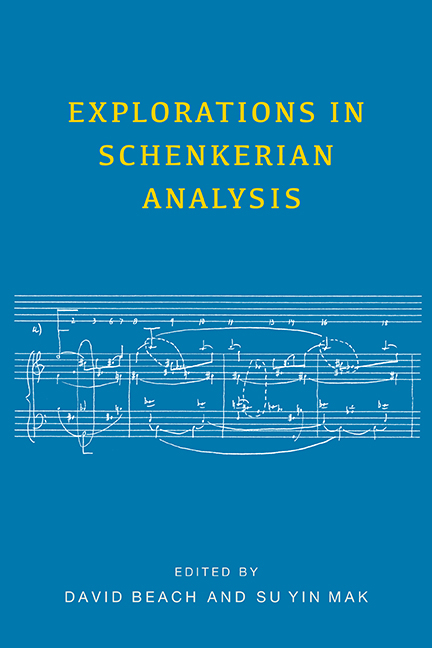Book contents
- Frontmatter
- Contents
- Preface
- Part One Eighteenth Century
- Part Two Early Nineteenth Century
- Part Three Late Nineteenth Century
- 11 Half-Diminished-Seventh Openings in Brahms's Lieder
- 12 Motivic Enlargement in Dvořák's Symphony Op. 70
- 13 Deliverance and Compositional Design in the “Libera me” of Verdi's Messa da Requiem
- 14 Polyphony and Cacophony? A Schenkerian Reading of Strauss's “Dance of the Seven Veils”
- 15 A Force of Nature: Debussy and the Chromatically Displaced Dominant
- Appendix: An Interview with Edward Laufer
- List of Contributors
- Index
13 - Deliverance and Compositional Design in the “Libera me” of Verdi's Messa da Requiem
from Part Three - Late Nineteenth Century
Published online by Cambridge University Press: 28 June 2018
- Frontmatter
- Contents
- Preface
- Part One Eighteenth Century
- Part Two Early Nineteenth Century
- Part Three Late Nineteenth Century
- 11 Half-Diminished-Seventh Openings in Brahms's Lieder
- 12 Motivic Enlargement in Dvořák's Symphony Op. 70
- 13 Deliverance and Compositional Design in the “Libera me” of Verdi's Messa da Requiem
- 14 Polyphony and Cacophony? A Schenkerian Reading of Strauss's “Dance of the Seven Veils”
- 15 A Force of Nature: Debussy and the Chromatically Displaced Dominant
- Appendix: An Interview with Edward Laufer
- List of Contributors
- Index
Summary
Verdi's Messa da Requiem was inspired by the death of the Italian poet and novelist Alessandro Manzoni (1785–1873), whom Verdi greatly admired. The Requiem had its premiere in Milan on the first anniversary of Manzoni's death, May 22, 1874. The “Libera me” is the final movement. As such, it functions not only as the conclusion to the work but also as its summation, in part because the verses of the “Libera me” responsory make possible the recurrence of materials from earlier movements in the mass (specifically, the “Requiem” and the “Dies irae”).
As is well known, Verdi's “Libera me” was previously conceived as part of a failed composite mass project planned with twelve other composers in memoriam Rossini (1792–1868). The “Libera me” closing movement, which Verdi completed in 1869 for the Rossini project, made him conscious of its potential for extrapolation into his own complete Messa da Requiem composition. In a letter to Alberto Mazzucato dated February 4, 1871, in response to Mazzucato's praise for the “Libera me” of the Rossini Mass, Verdi refers to his “desire, one day, to write the entire Mass; particularly since, with a little further expansion, I would find that I had already completed the Requiem and the Dies irae, whose recapitulation [riepilogo] I have composed in the Libera.” In addition to materials from these two movements, the 1874 “Libera me” cross-references a number of earlier passages in the work. Within the “Libera me” itself, the 1869 version is largely incorporated into the 1874 work; however, the latter version is an altogether more powerful realization, and it is claimed here that a number of the changes Verdi made in 1874 contribute significantly to the motivic continuity and poetic affect that are the main analytic subjects of this essay.
Following a brief review of the literature, my study begins with observations on the liturgical text and the overall formal and tonal design of Verdi's setting.
- Type
- Chapter
- Information
- Explorations in Schenkerian Analysis , pp. 241 - 282Publisher: Boydell & BrewerPrint publication year: 2016



